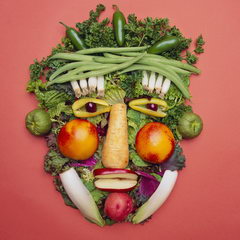
inCYSTer Christine Marquette recently gave a great, detailed webinar about supplements and PCOS. In it, she pointed out that there are certain nutrients women with PCOS may need more of because their metabolism is altered.
What I've been wondering ever since, is whether or not they need more because their intentional eating plans have thrown them out of balance…or would they need more even if they ate absolutely perfectly? The research does support these additional needs, but what the studies do NOT do, is provide women with healthy food for a period of time to discern whether those needs exist even when the diet has been brought back into balance. I suspect the needs would still be different, although not perhaps not quite as remarkable as they are when you're not eating well.
I thought, once a week, I'd introduce you to a vitamin or mineral and challenge you to see if you eat enough of it, regularly, over the course of the day.
Once you bring all of your vitamins and minerals back to baseline, then you can more accurately determine whether or not supplementation is going to work for you. If you want to check out how you're doing, check out http://www.fitday.com/, where you can enter all of your foods and check out how your own intake measures up to the recommendations for the vitamins and minerals.
Vitamin A
How do you do with the following foods?
liver carrots broccoli leaves (not the commonly eaten florets) sweet potatoes butter kale spinach pumpkin collard greens cantaloupe egg yolks
Keep this list handy over the next week and think of ways you can be sure you're getting enough vitamin A. Here are some suggestions.
1. If you make your own smoothies, be sure to throw a handful of leafy greens into them. Even if they're fruit flavored, a handful won't make a difference flavor-wise, but they'll make a huge difference nutrition-wise.
2. If you juice, which is the easiest way to get tons of vitamin A, be sure to balance all that carbohydrate with some protein. The biggest problem with juicing for people who tend to be insulin resistant is the huge carbohydrate load in comparison to the protein juice tends to not provide.
3. Always buy the darkest possible greens for your salad
4. Think kale chips, broccoli chips, etc. They're easy to make and tasty to munch on!
5. If that hour between arriving home and eating dinner is a problem, stock your refrigerator with baby carrots and hummous to snack on while you wait.
6. Try putting spinach leaves instead of plain lettuce on your sandwiches.
7. I'm a huge fan of omelets and frittatas. I never ate Swiss chard until I learned to put it into a frittata. It's also a great way to clean out the vegetable bin at the tail end of the week, it's a cheap dinner (it adds some eggs to your diet), and it's so easy on those nights when you come home exhausted and not wanting to think about anything complicated for dinner.
8. Boil up some eggs and keep them handy for snacks and to top salads with. We tend to be afraid of eggs because of the outdated information about cholesterol. They're actually quite healthy, quite convenient, and something that can make getting vitamin A…as well as protein…a little bit easier.
9. Still have an abundance of vegetables after eating the frittata? Why not make some soup! I have a slow cooker and it is the best appliance for making an easy dinner. A few minutes in the morning and I've got the house smelling great by late afternoon. If thinking about this in the morning while you're rushing out the door just isn't going to work…try putting everything in the slow cooker the night before and programming your smart phone to remind you to plug it in before you leave for work.
10. Stir fry! It's quick and it's easy. You can also buy chopped up vegetables if you want it to be even easier.
OK, let's do it! Let us know how you do with the challenge, or if you have new suggestions to add.


































